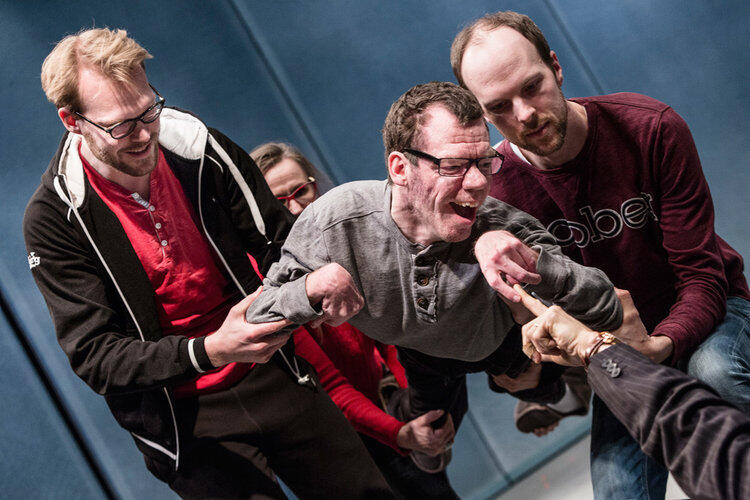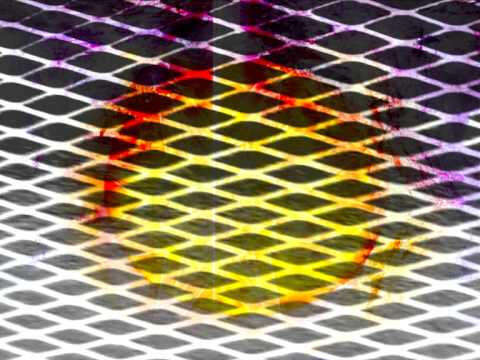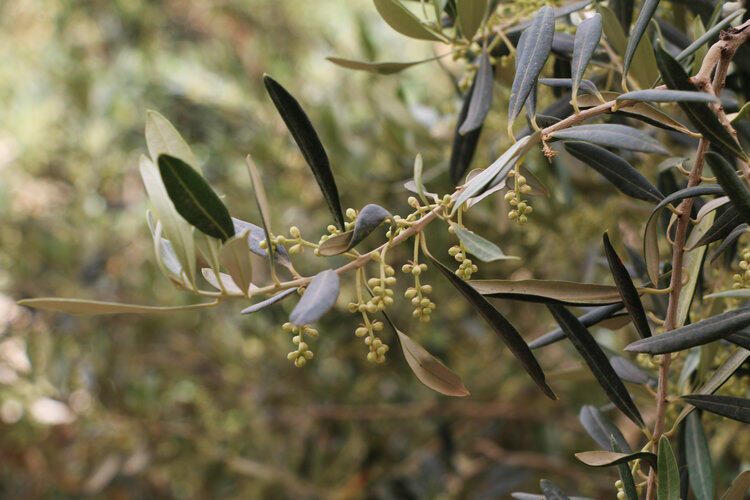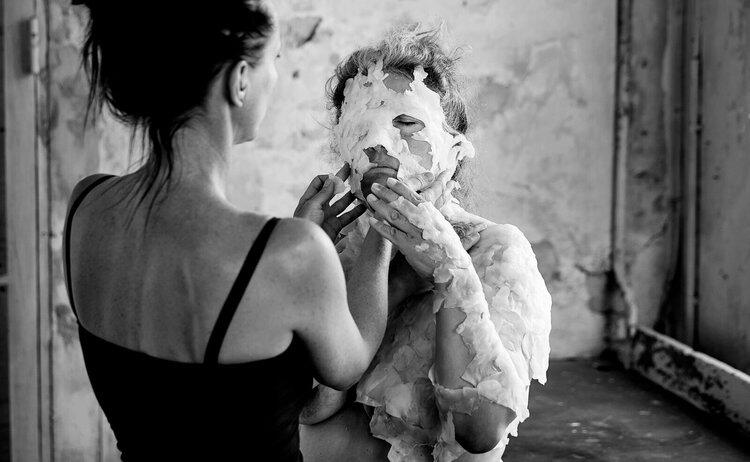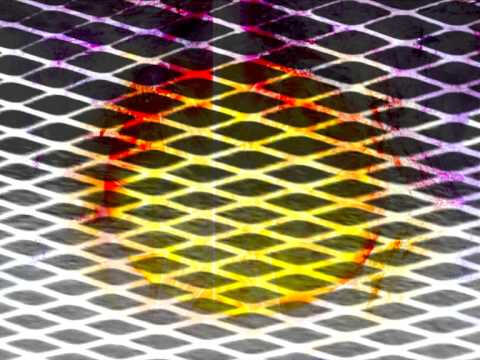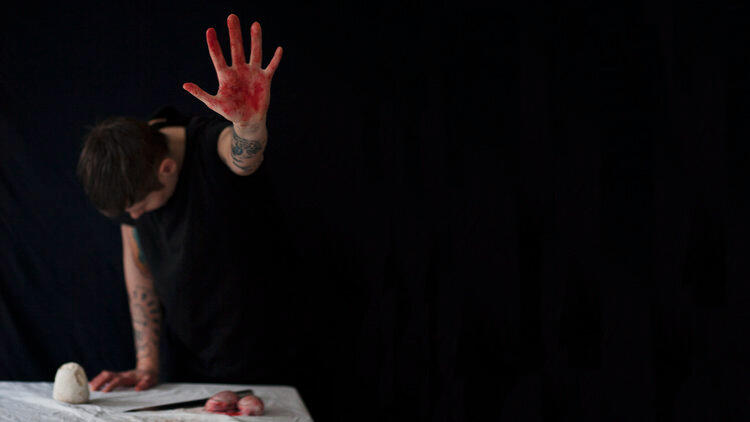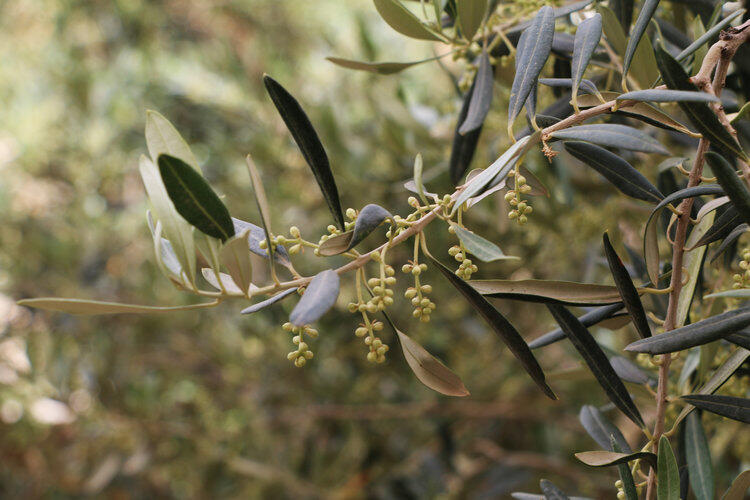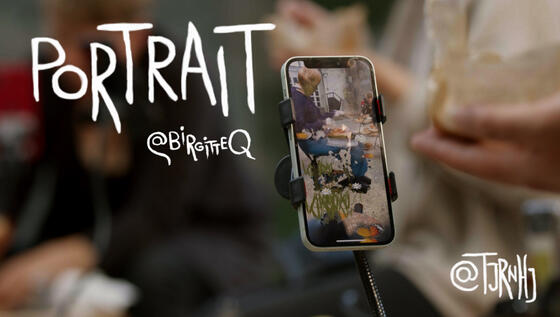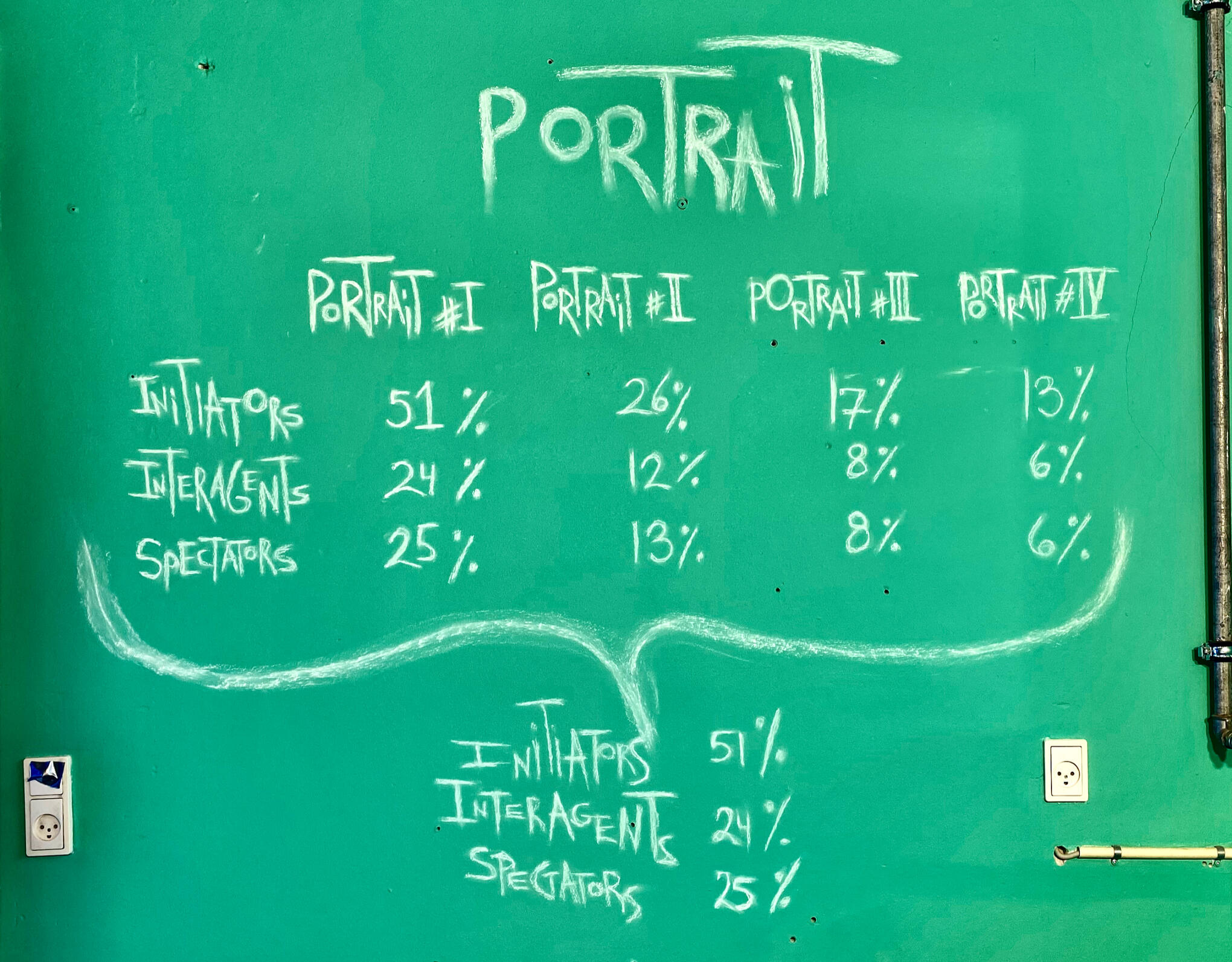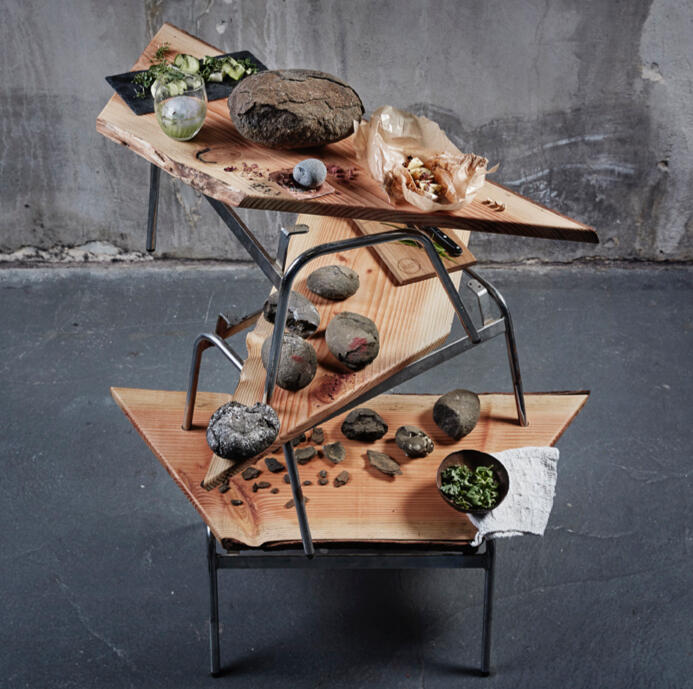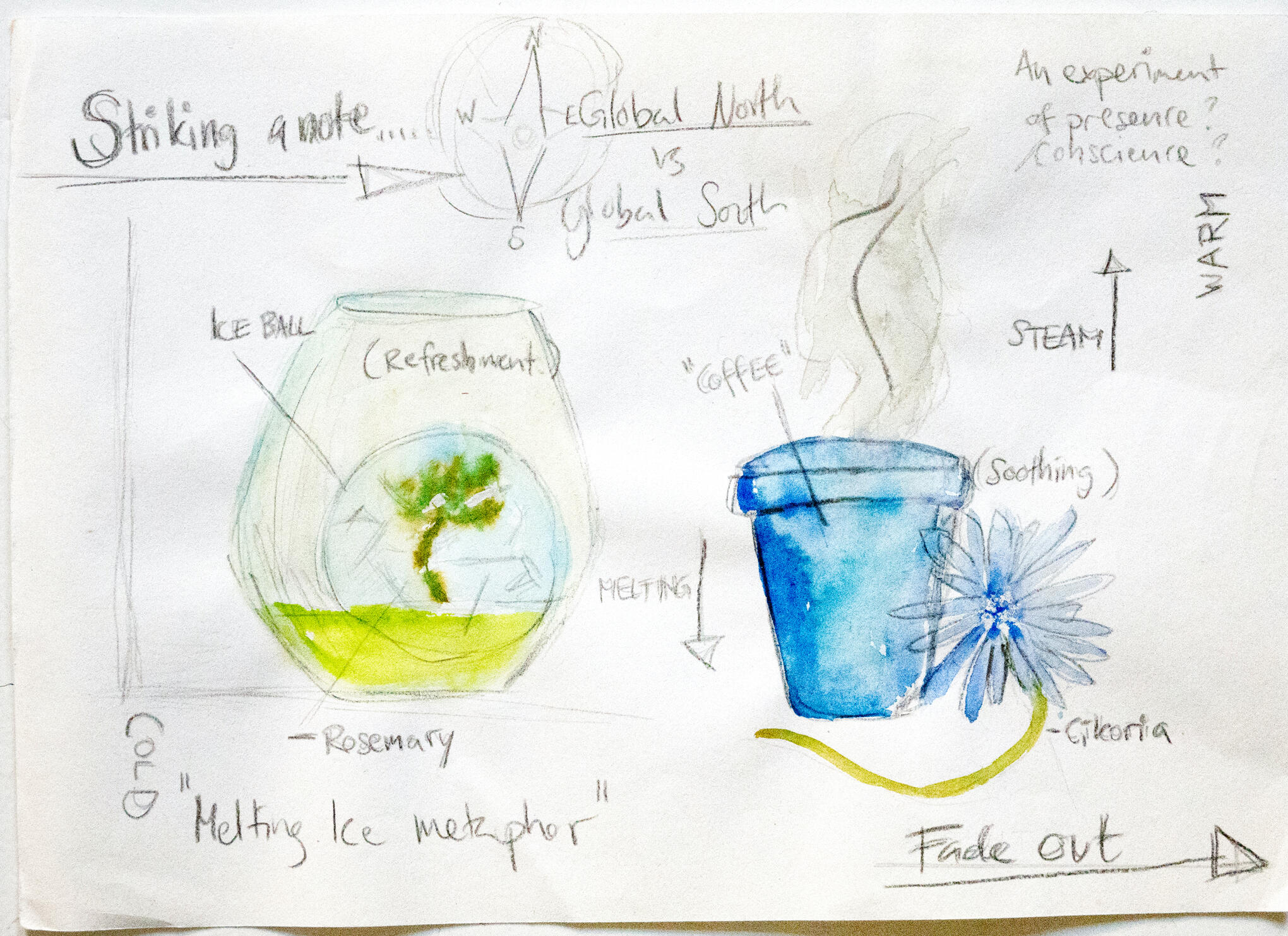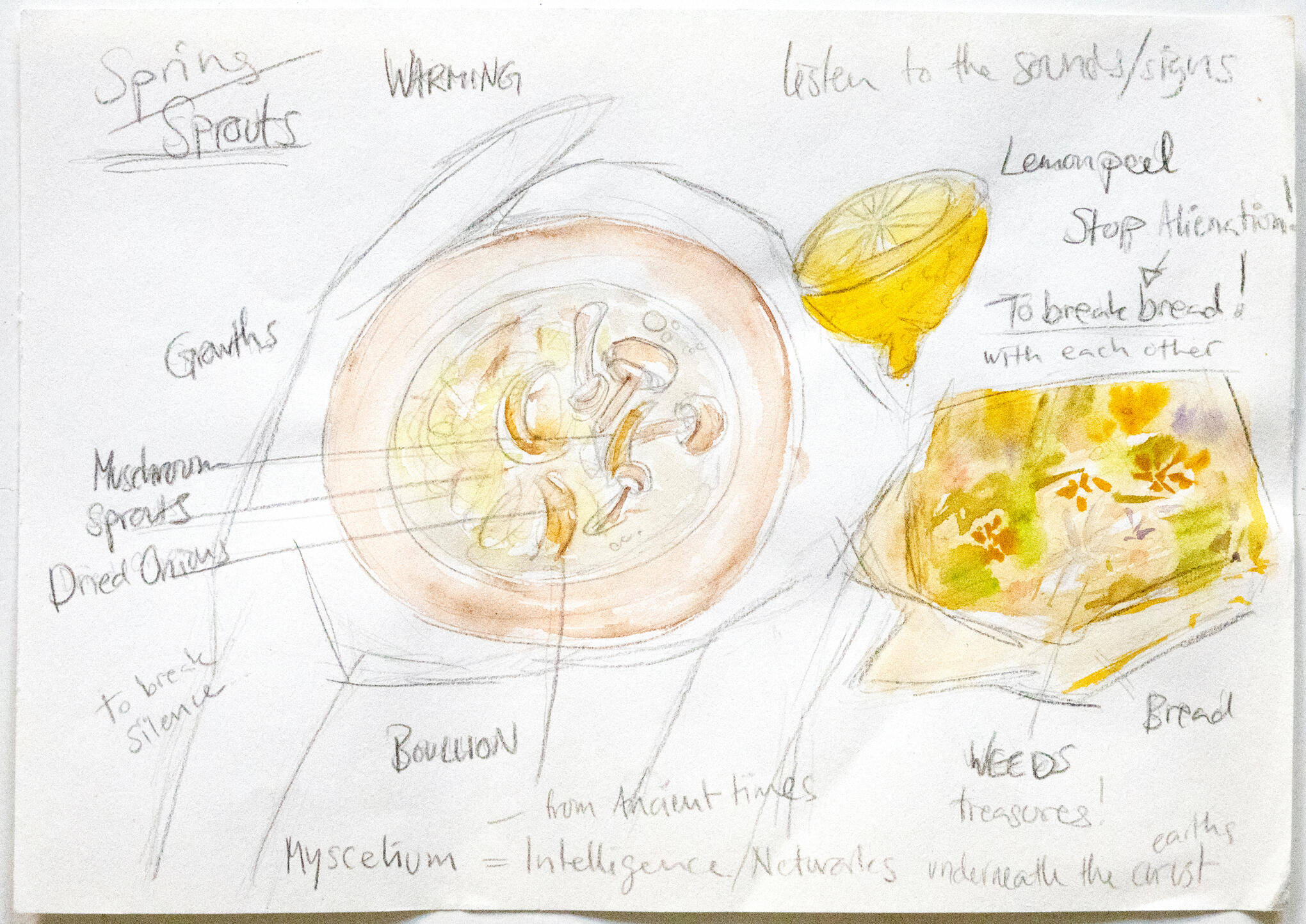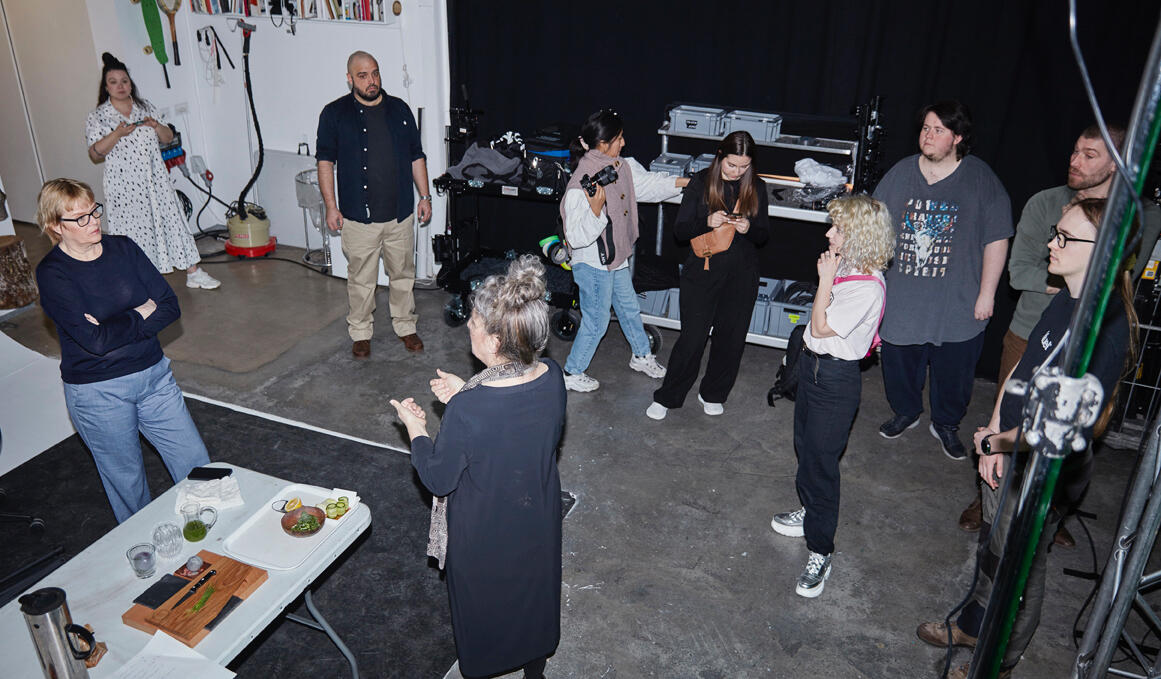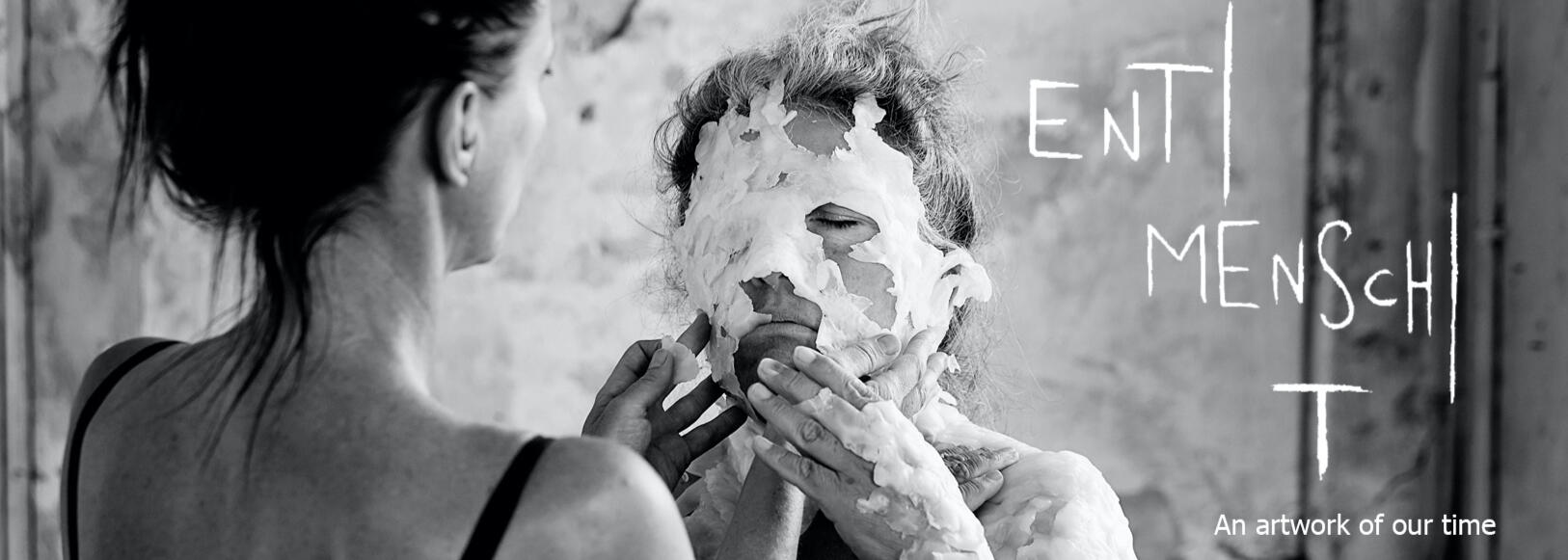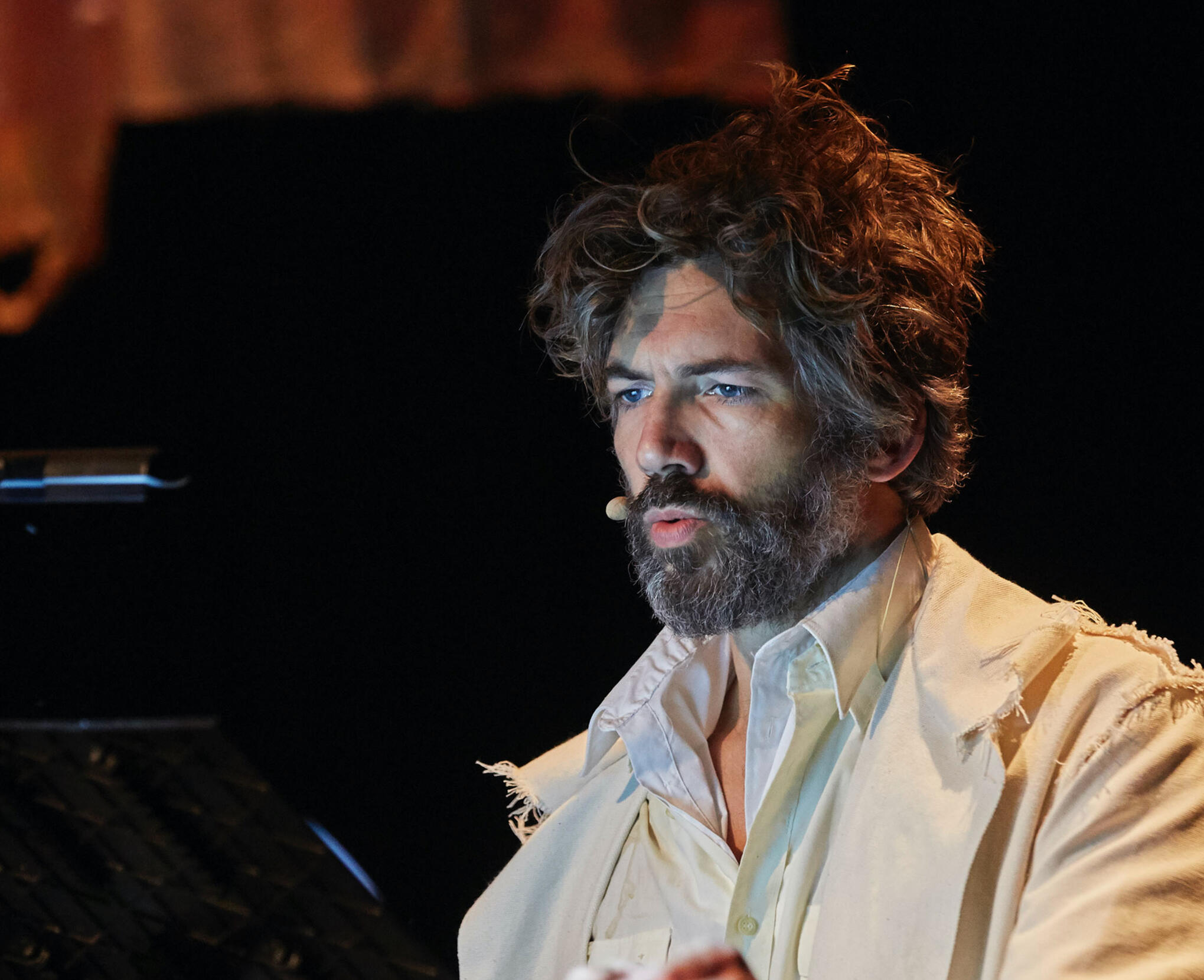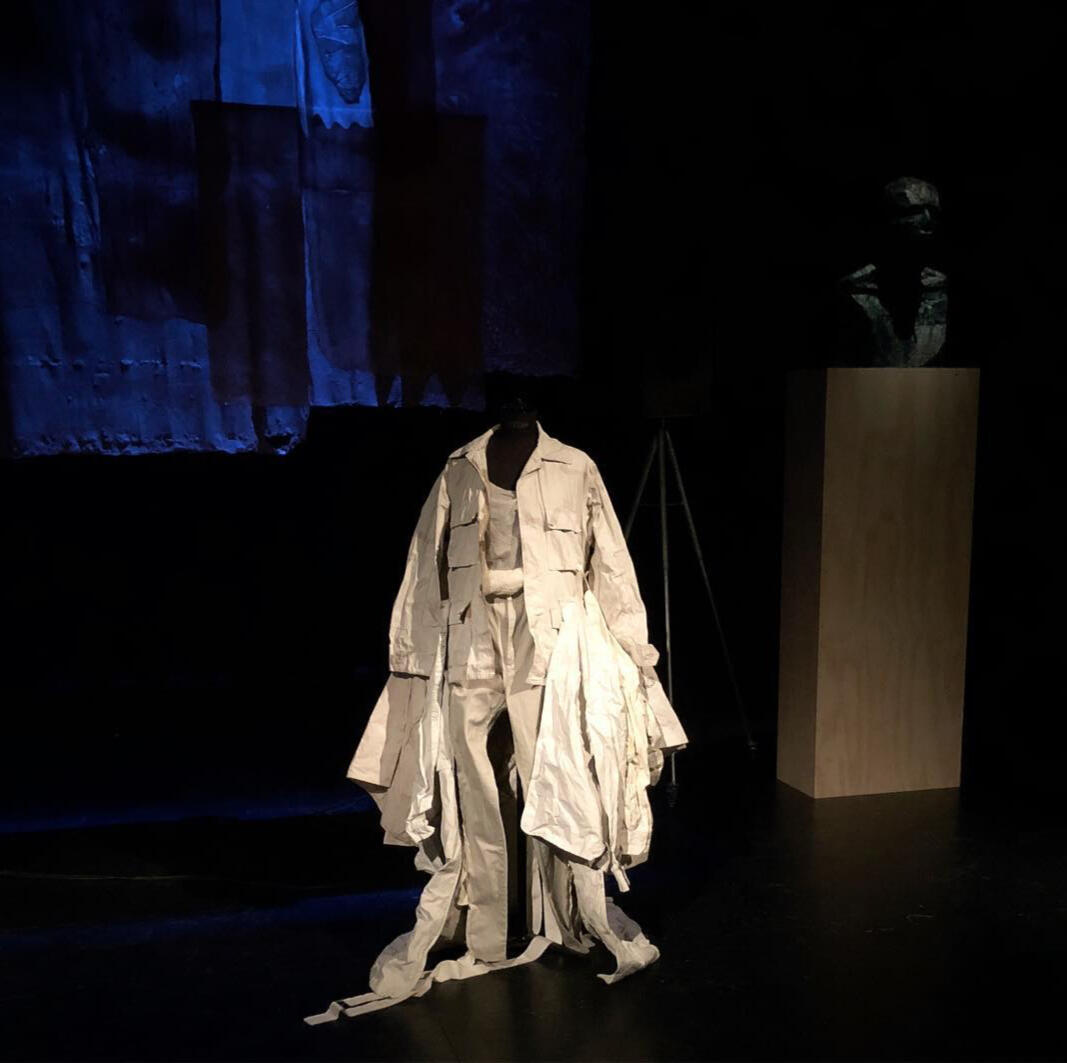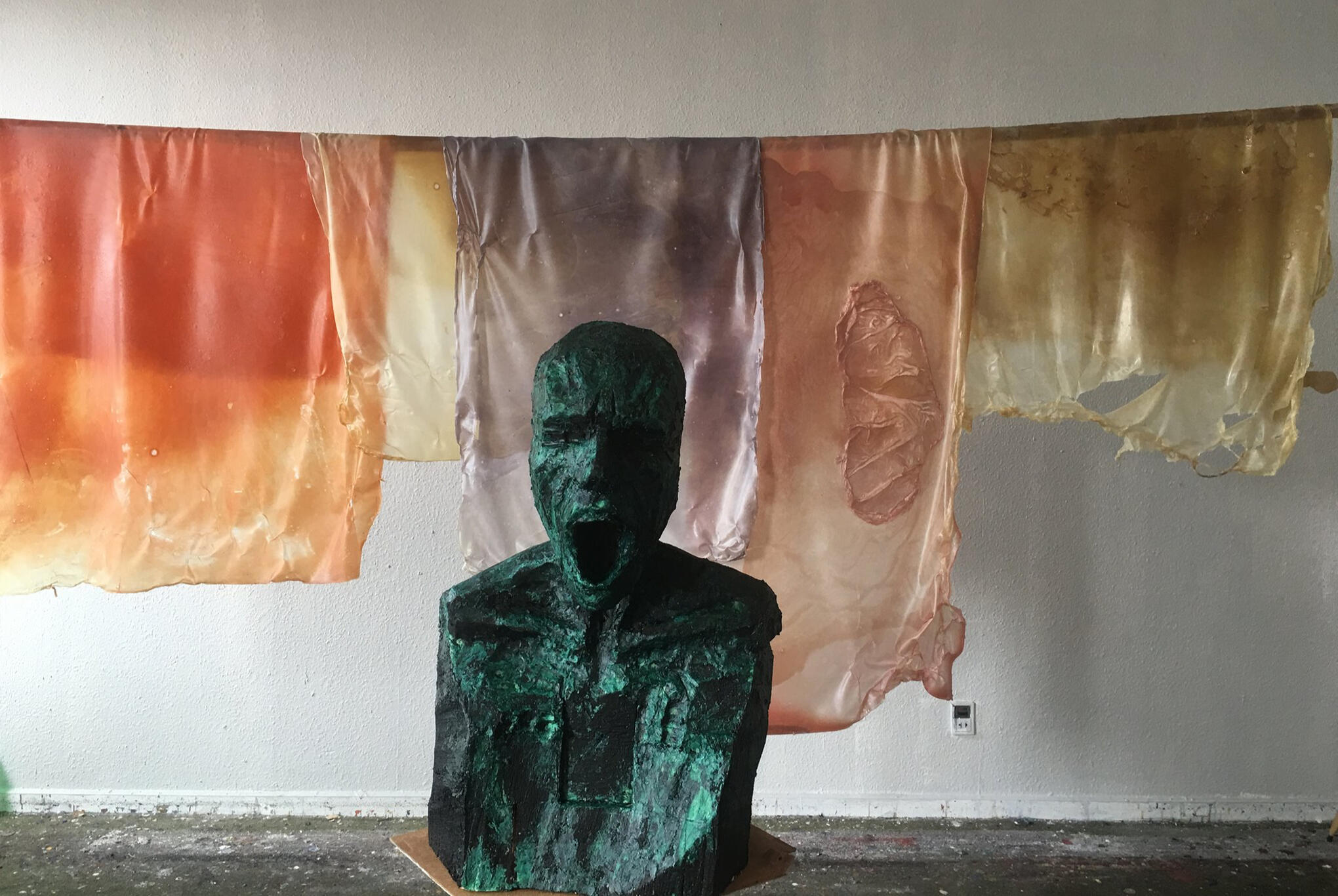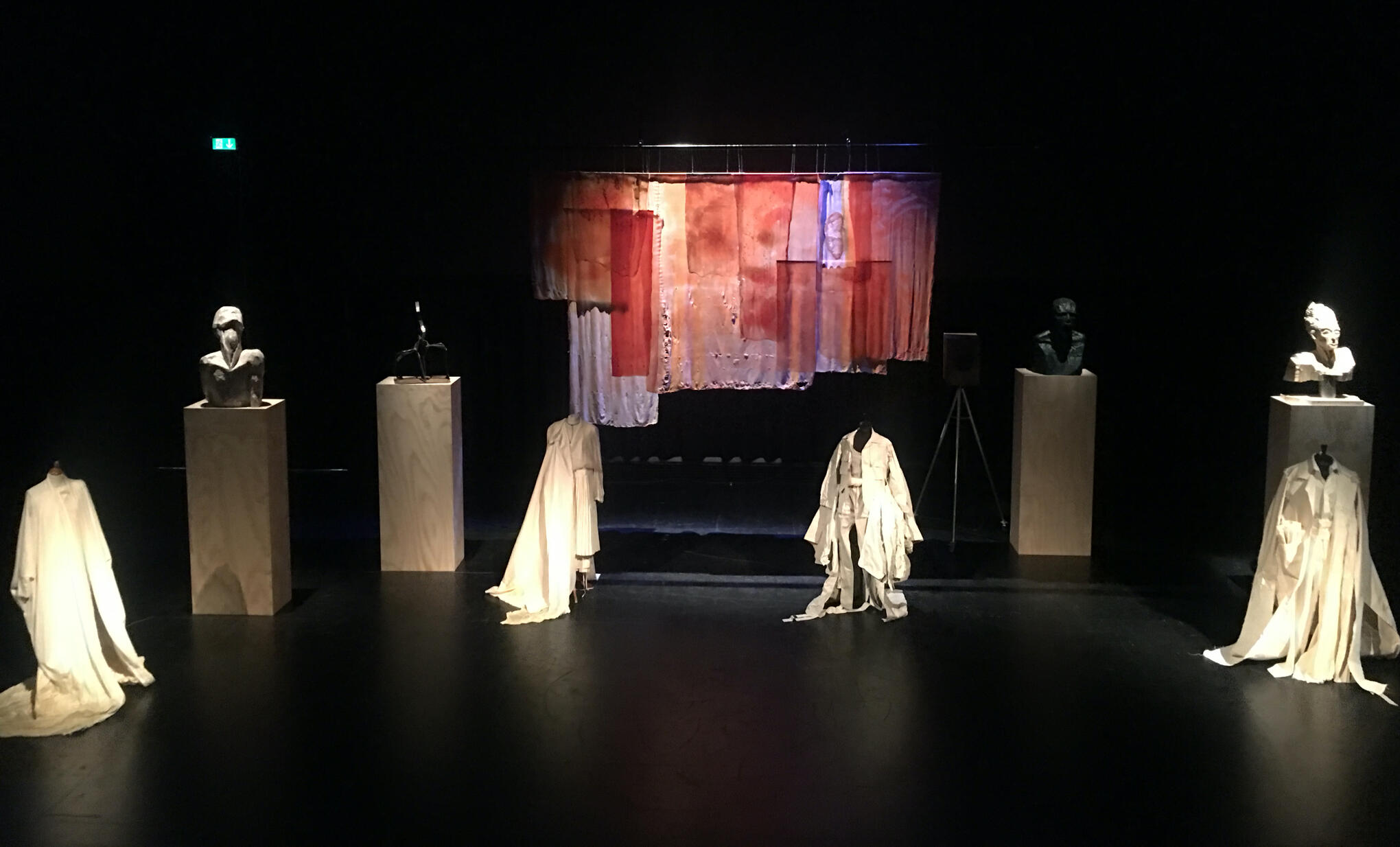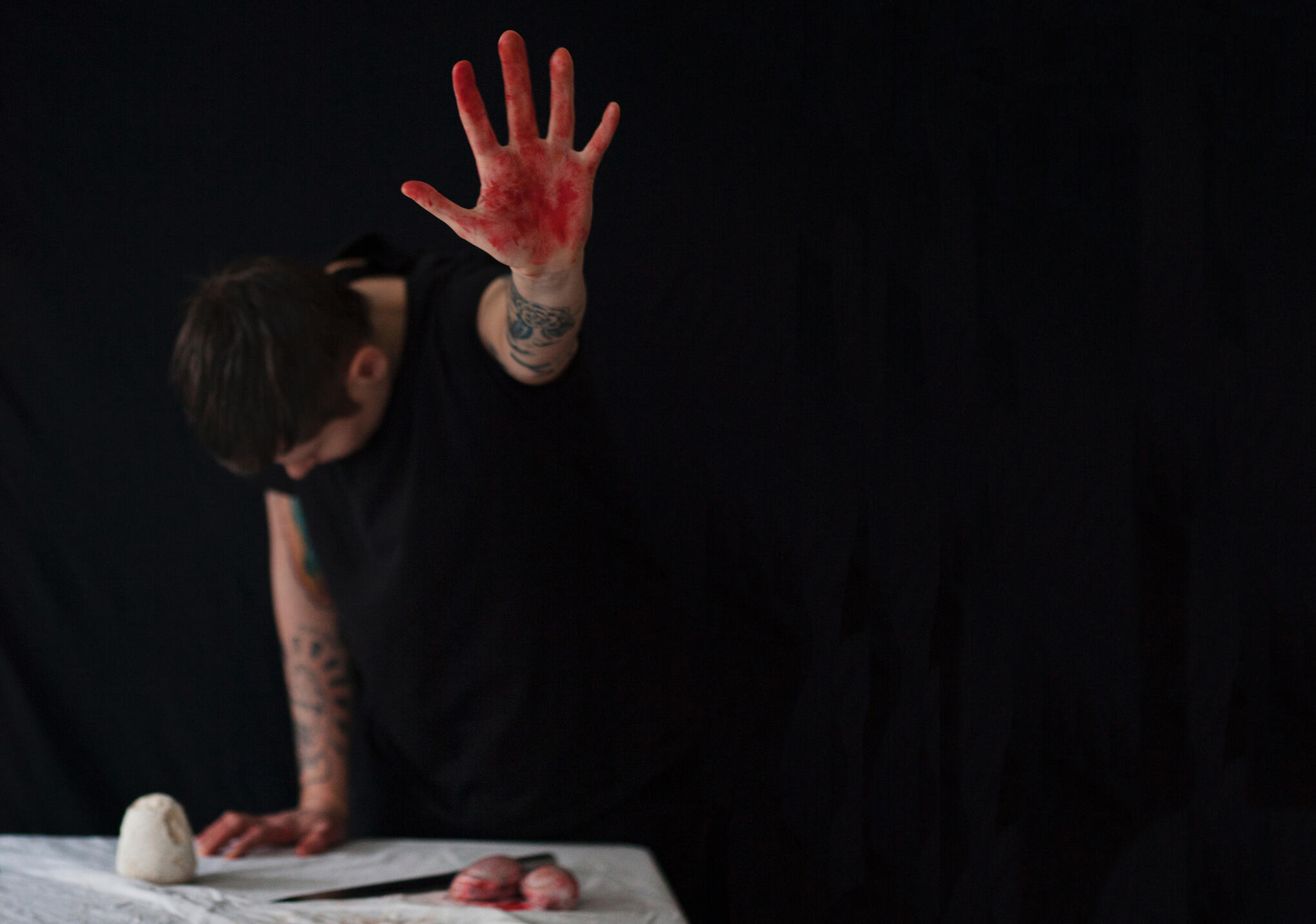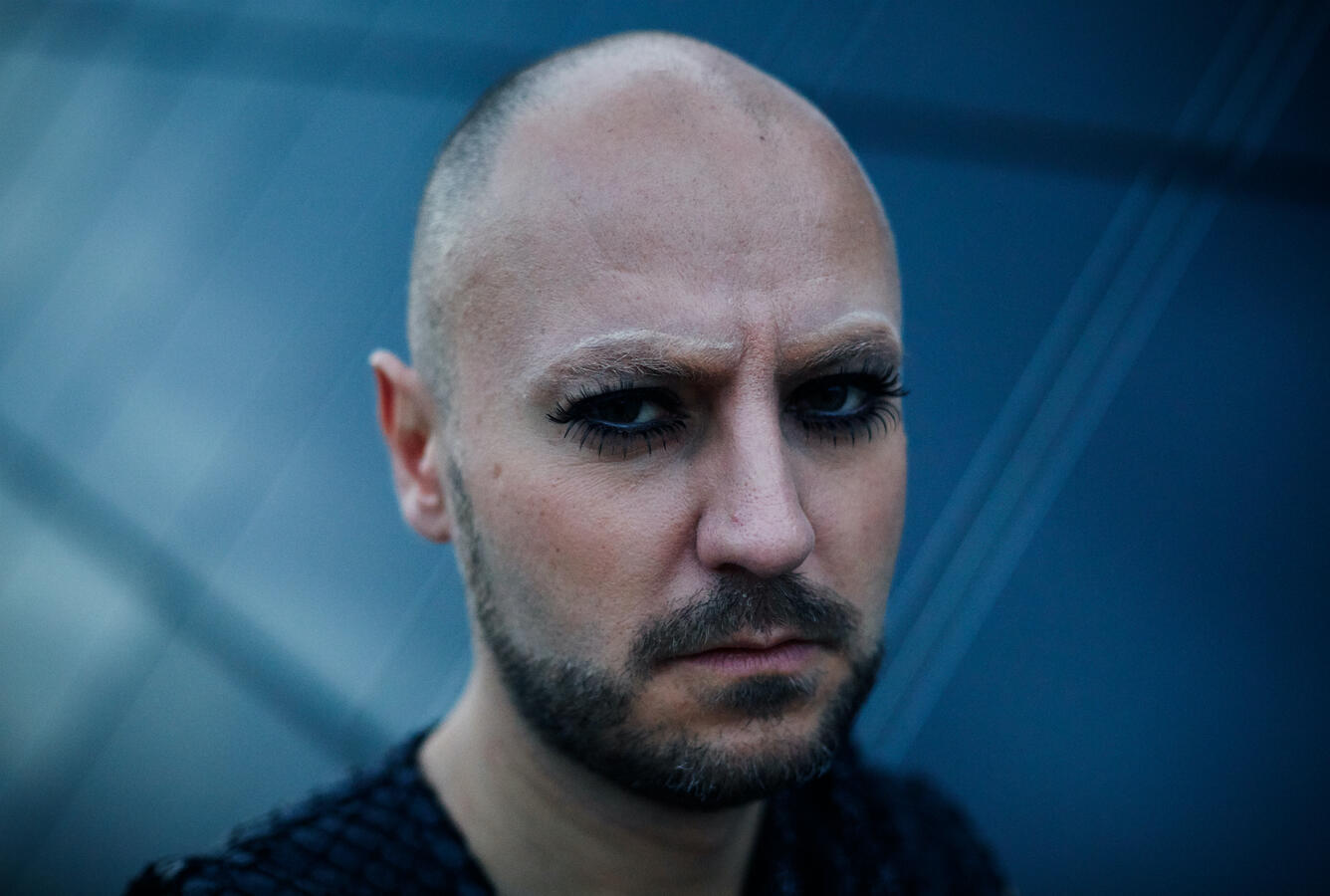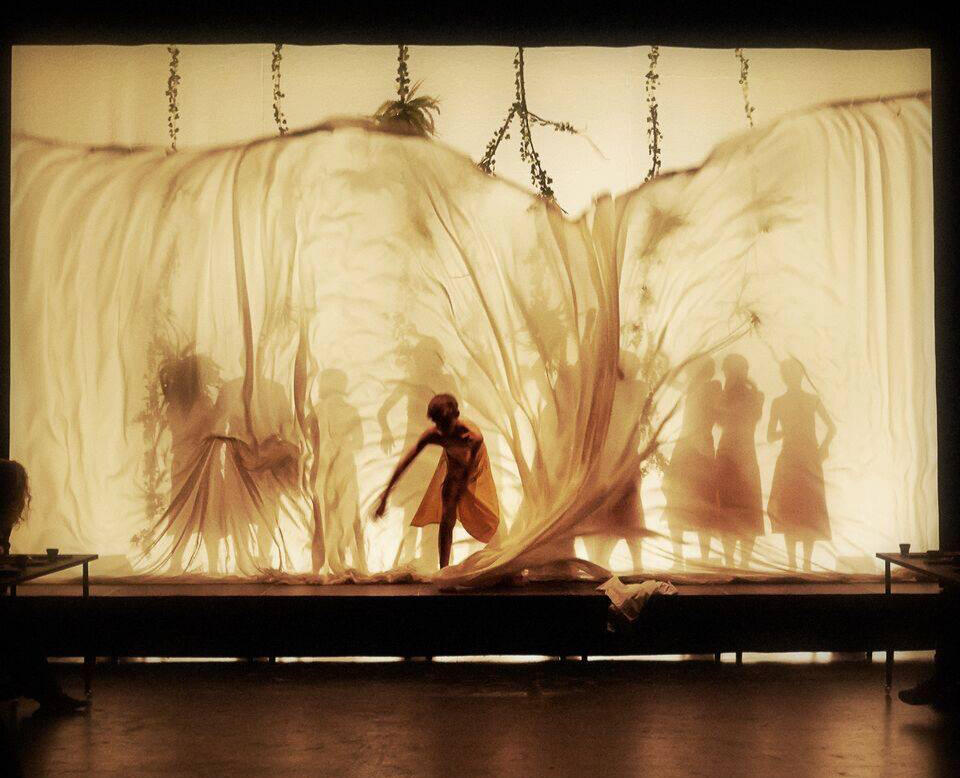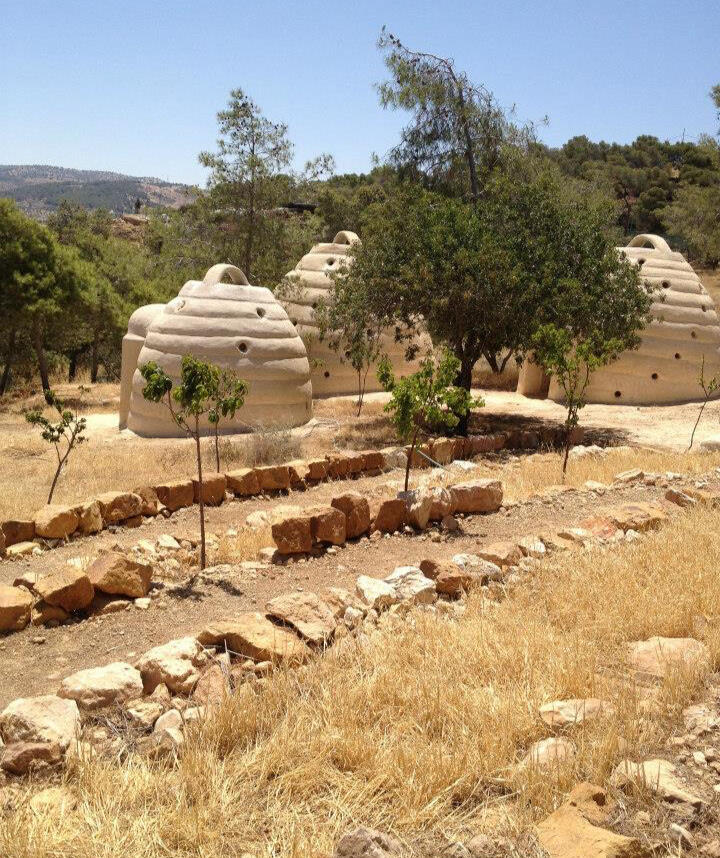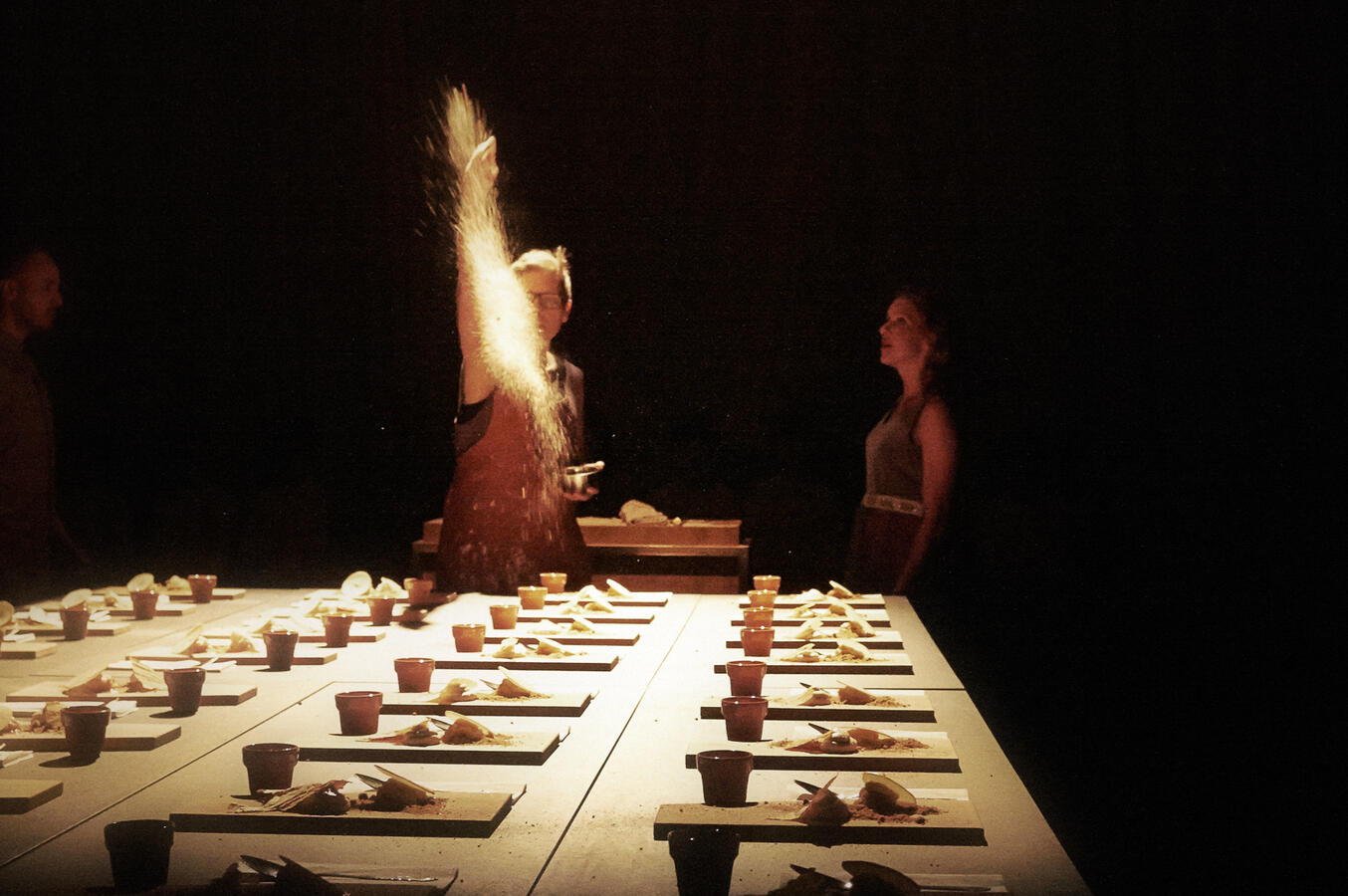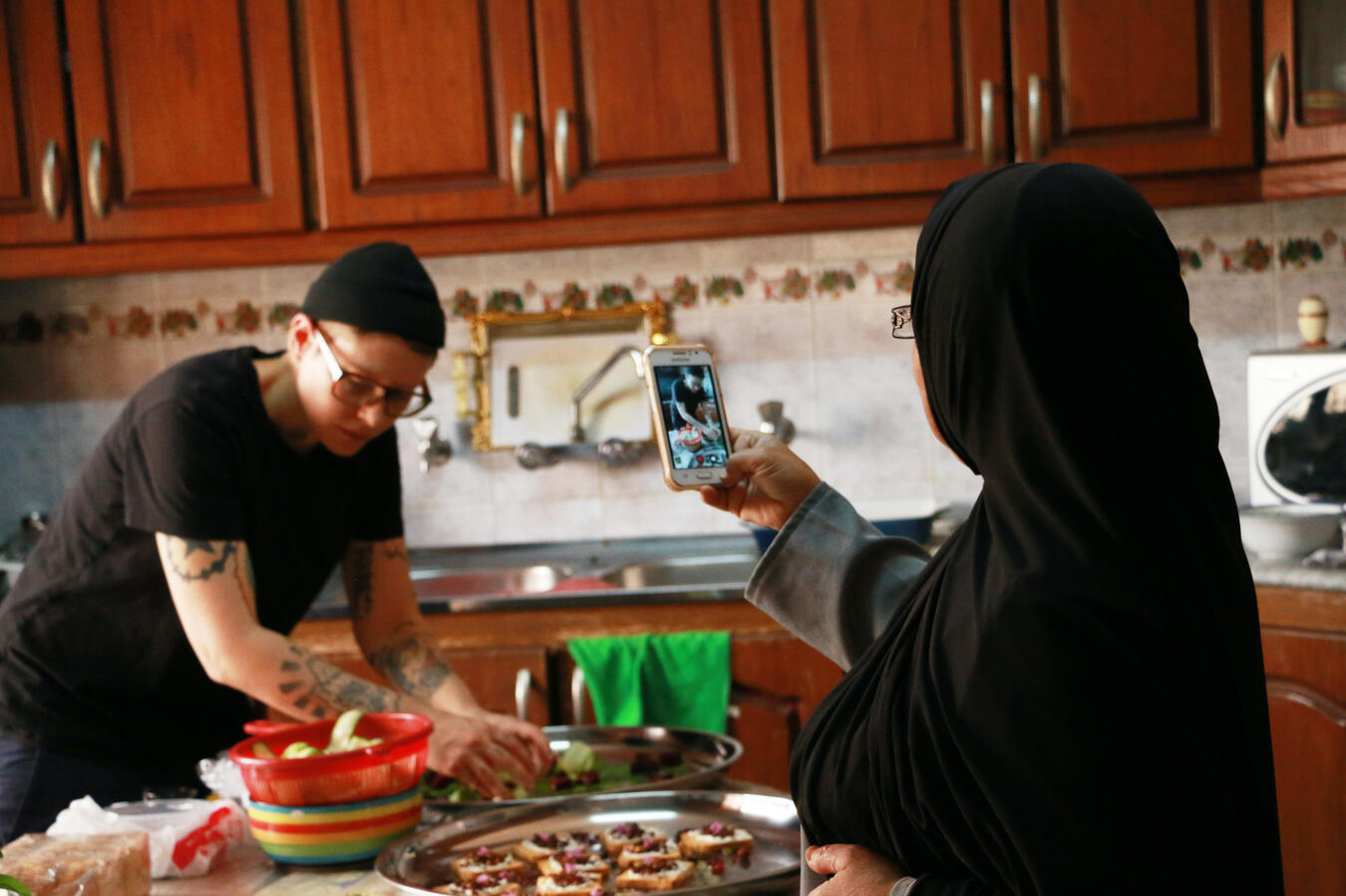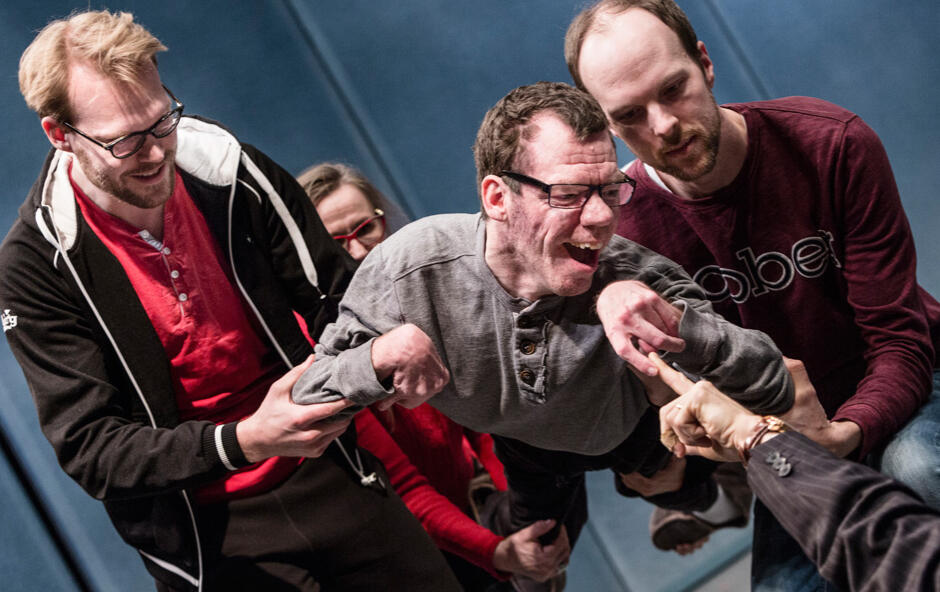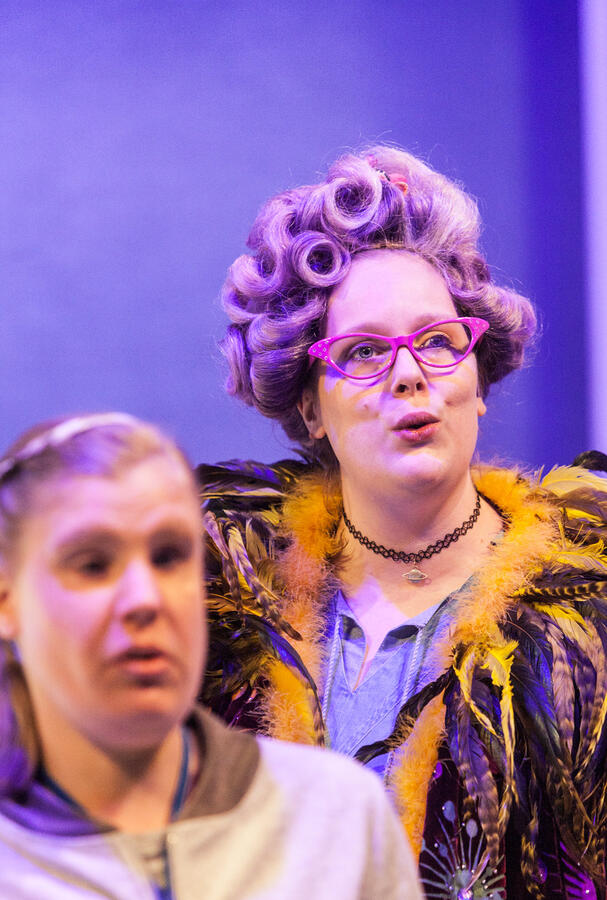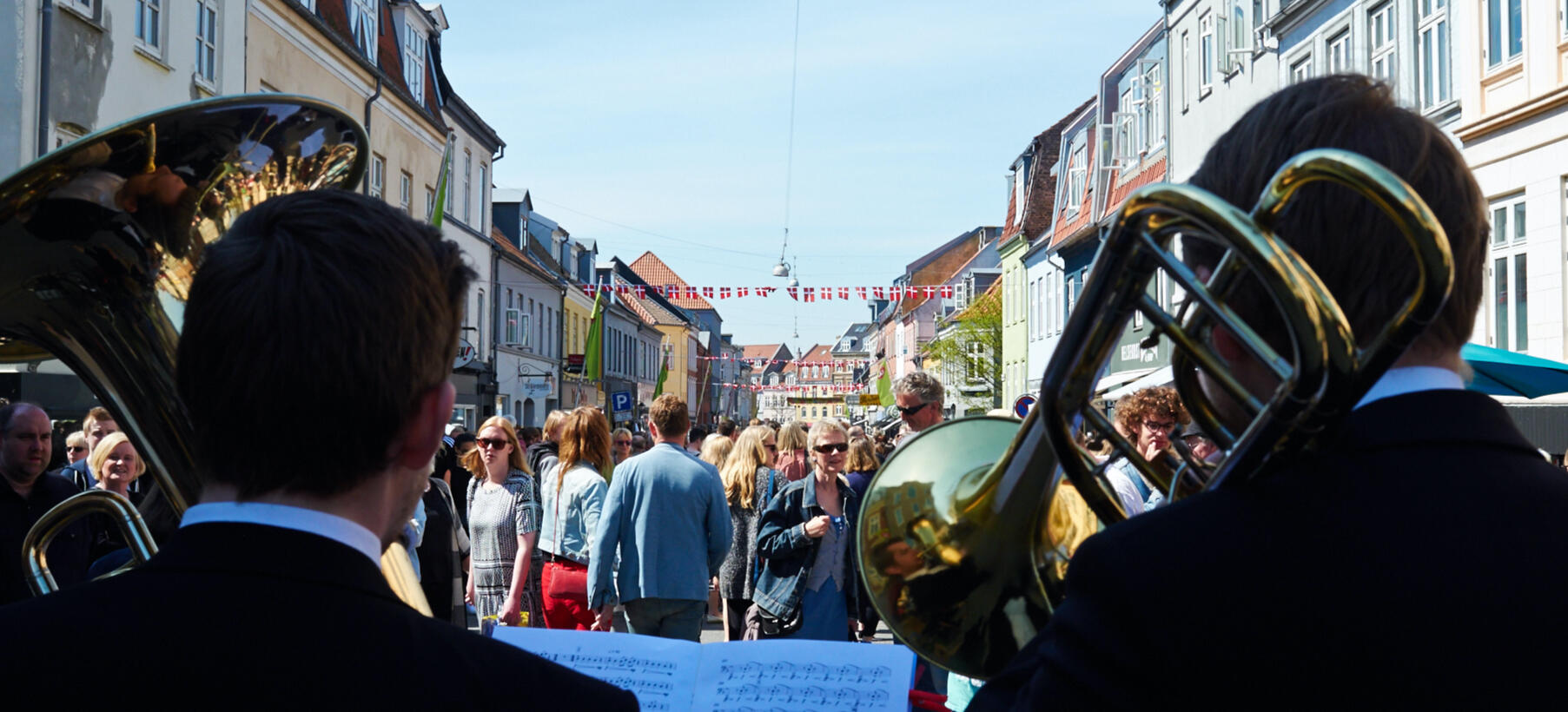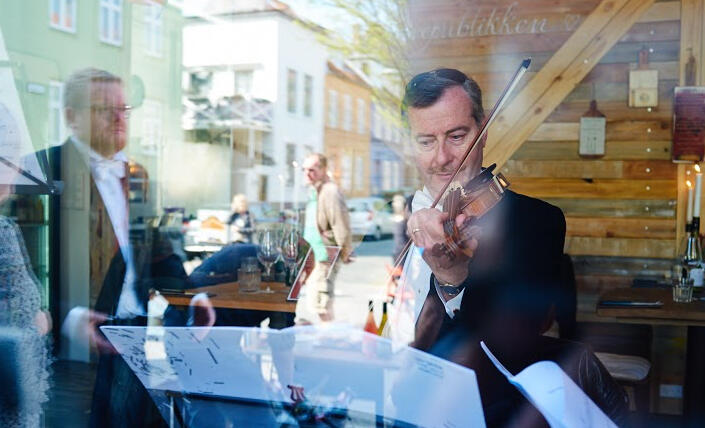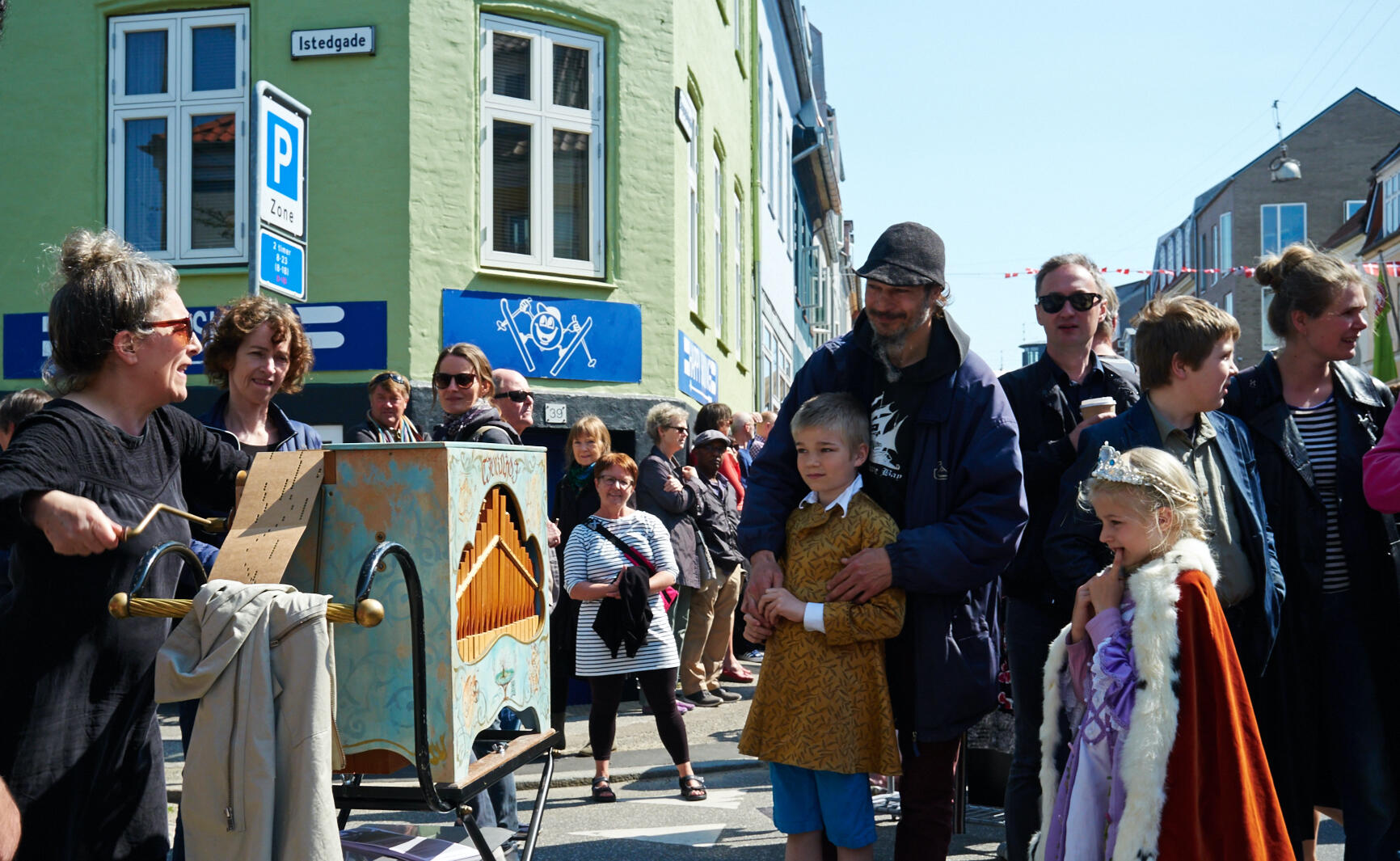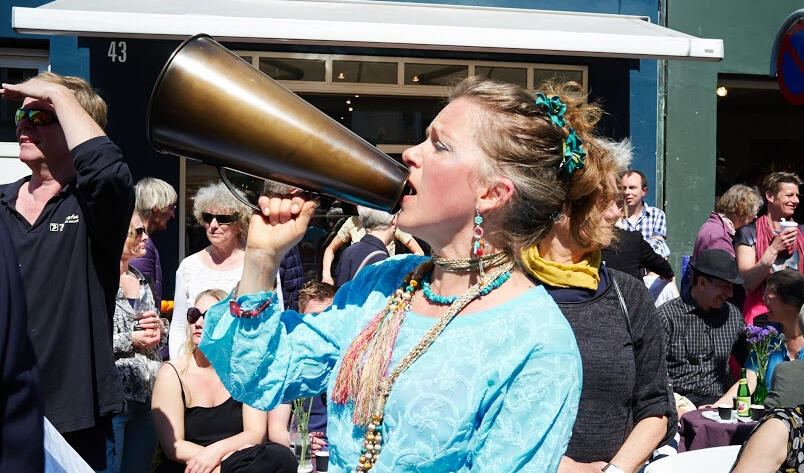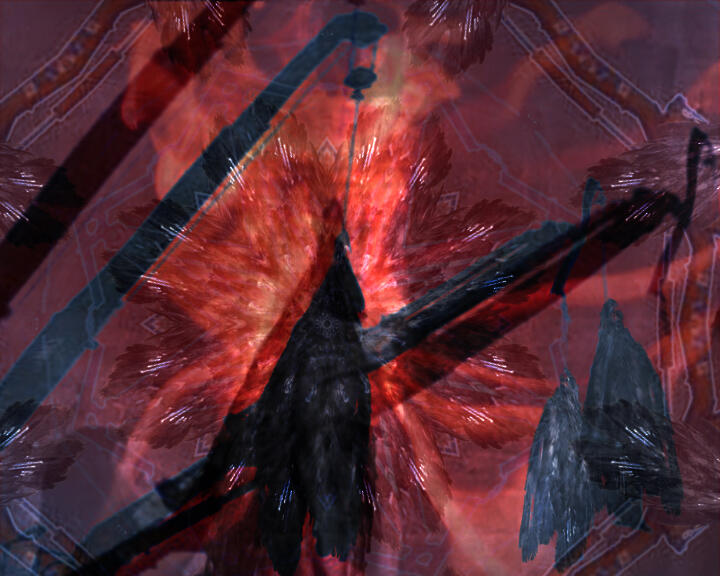Line Tjørnhøj
Composer (ageless she/her)
Tjørnhøj – builds up her music from the idea that the human voice is one of the most basic elements in our sound universe; it has an immediate access to ears and emotions. When creating musical narratives, she focuses on exploring the soothing qualities and wailing beauties of instruments, voices, industrial concrete sounds as well as the intimate sounds related to our everyday human activity. Tjørnhøj is well known for dealing with universal themes and timeless problems through contemporary sceneries – and especially for her courage of addressing human cruelty and misuse of power.Tjørnhøj works fearlessly in fields spanning from electronic soundworks, installations, opera, orchestral works to activistic performances.Tjørnhøj works collaboratively with the performers to whom her music adjusts, insisting that each character develops its own unique expression.
Education, prizes, and awardsTjørnhøj studied composition at The Royal Academy of Music in Aarhus under the supervision of Simon Steen-Andersen, Niels Rønsholdt, and Lasse Laursen.Tjørnhøj received the prestigious Carl Nielsen Prize, 2017, the Three-Year Working Grant from the Danish Arts Foundation, and the Danish Composers’ Society Grant, among others. Her opera Anorexia Sacra was awarded best chamber opera by the American Opera Vista Festival, 2009.Tjørnhøj have had commissions by renowned ensembles and orchestras including Göteborg Operan, Aarhus Symphony Orchestra, Danish National Symphony Orchestra, The Royal Danish Opera, Ars Nova Copenhagen, Theatre of Voices."Line Tjørnhøj often deals with themes that are unfamiliar in the contemporary music scene. She creates deeply expressive music for tense moral and social dilemmas, thereby giving a voice to tabooed people and subjects. Her projects, spanning cultural and musical borders, have brought about international collaborations, which is reflected in the music itself. Line Tjørnhøj is awarded the honorary award as a recognition of her contribution to expanding the field of musical expression ..."The Carl Nielsen Prize committee
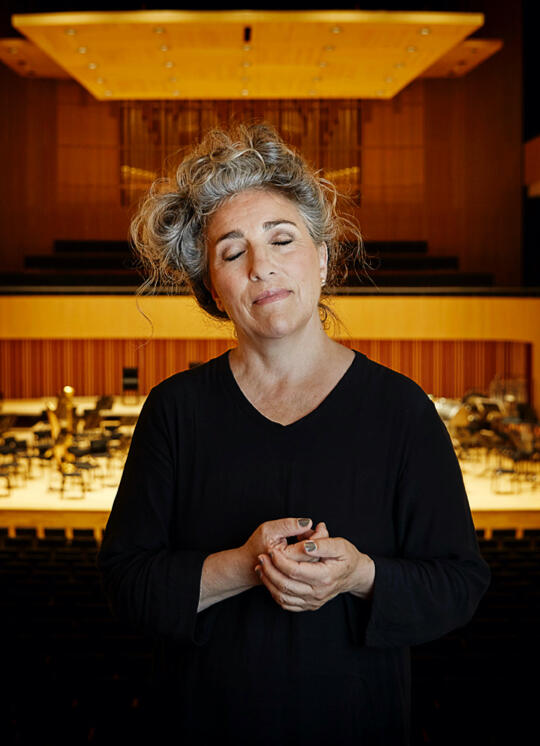
Selected works
Hånden på Hjertet (2020)
Danish National Girls Choir
enTmenschT (2018)
Theatre of Voices
music theatre installation
Agony - an eating opera (2017)
TONE
chamber opera
Shanghai (2017)
Göteborg Opera
chamber opera
Tusk (2016)
Aarhus Symphony Orchestra
for solo voice, mixed choir, orchestra
Vox reportage (2013-2017)
Ars Nova Copenhagen
a cappella choir, SATB
Tomorrow’s Child (2012)
TONE
opera; electro acoustic
Stabat Mater (2009)
TONE
opera
Daughter (2008)
TONE
vox:dox, electro acoustic
Anorexia Sacra (2006)
Opera Vista / Houston
opera
© @tjrnhj All rights reserved.
Line Tjørnhøj
Composer (ageless she/her)
Tjørnhøj works fearlessly in fields spanning from electronic soundworks, installations, opera, orchestral works to activistic performances.Tjørnhøj works collaboratively with the performers to whom her music adjusts, insisting that each character develops its own unique expression.Tjørnhøj have had commissions by renowned ensembles and orchestras including Göteborg Operan, Aarhus Symphony Orchestra, Danish National Symphony Orchestra, The Royal Danish Opera, Ars Nova Copenhagen, Theatre of Voices.
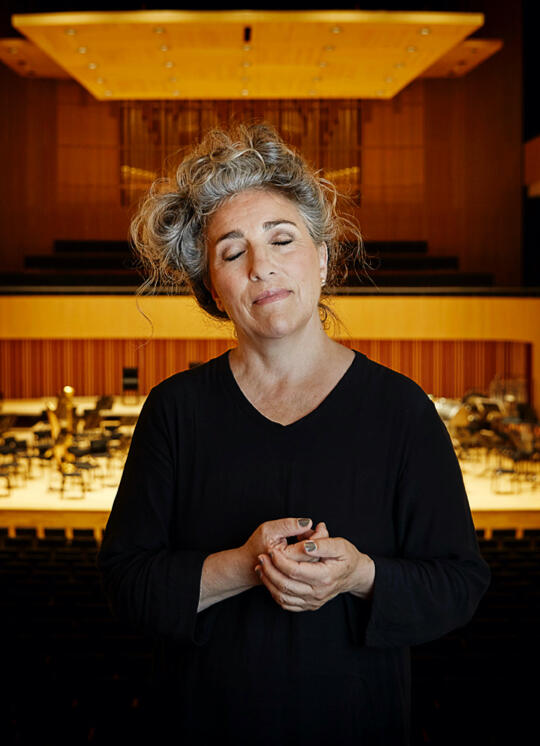
FEATURED
HÅNDEN PÅ HJERTET
BAG OM HÅNDEN PÅ HJERTET
Hand on the heart (Hånden på hjertet)
Lyrics and music by Line Tjørnhøj
Participants:
Line Tjørnhøj, composer
Frigg Witt, singer in DNGC
Lea Vestergaard-Jørgensen, singer in DNGC
Phillip Faber, conductor
DR Danish National Girls' Choir
Journalist: Karen Lerbech
Video/editing: Mikkel Suppras
In 2019 DR Danish National Girls' Choir commissioned a new piece by the Danish composer Line Tjørnhøj, which they presented at their Spring Concert in Holmens Kirke in Copenhagen on March 8 - without audience, due to the outburst of Covid-19.
Works
© @tjrnhj All rights reserved.
Works
Contact @tjrnhj
Thank you
I will be in touch shortly
PORTRAIT
The Woman. Technology. Climate.
PORTRAIT @BirgitteQ is a digital multimedial MONUMENT paying tribute to Secretary General of DanChurchAid, Birgitte Qvist-Sørensen as she tireless works to provide hope and concrete help to needy people throughout the world. She is living proof of how the right combination of power and humanity can change the world we live in, even when she is daily confronted with the massive consequences of climate crisis, war and abuse of power.
Together we sit down. We're not saying anything. We observe, we listen, and we eat the food that deviates from what we usually do, but that protects the world we are a part of. In front of us appearing as a magnificent monument is a lifelike digital version of Birgitte Qvist-Sørensen. As a living figure on each of our phones, we can get up close and personal with the woman who helps people around the world. We see her and we hear her. Eat. We are served food, and we also eat ourselves. The sound of the eating ritual reinforces the resounding feeling of aloneness. Us being individualists.
Tjørnhøj says:
*"PORTRAIT is a work that draws out the activistism of sound art. The WOMAN, the TECHNOLOGY and the CLIMATE. These elements blend with each other in the work as a common symbol of the present we are a part of and the future we would like – and should – create. A future where our individualism must give way and where technology is steadily gaining ground – hopefully along with women's rights and the fight against climate change." *
PORTRAIT combines two worlds – the digital and the real bridged by a PLINTH – the carrier of the code your device needs for the AR experience of PORTRAIT. THE PLINTH challenges our idea of a solid robust foundation for the monument – as it, with its planks and ‘iron-stones’, represents the fragile equilibrium the world finds itself in before a societal collapse
The immediate cohesion of the eating ritual is interrupted by silence. In the naked silence, we only hear the sound of the food we and Birgitte Qvist-Sørensen, devour. The woman's strong work, the food's references to the climate and the all-encompassing calm make us reflect. The question is, how do we, as individualists, gain the strength to change the needs we have acquired and help the world instead of helping ourselves?
Tjørnhøj has chosen to portray Birgitte Qvist-Sørensen because, with the means at her disposal, she helps the world become a more equal place to live in.
Birgitte Qvist-Sørensen holds a MA in Theology and a Master in Management development. She is Secretary General of DanChurchAid, a faith-based civic organization. She works tirelessly for a fair and sustainable distribution and use of the planet's resources with a focus on humanity.Decentralisation is at the heart of this PORTRAIT, in which OWNERSHIP is based on blockchain technology. Non-Fungible Tokens (NFT´s) allow audiences and partners to become co-owners of the artwork. A co-ownership, which with new iterations of PORTRAIT will transform into a community owned and curated artwork.
The ownership model explores the powers of community curated art iterations. Audience will be able to opt in at each iteration preserving the collective ownership %stake.
While PORTRAIT starts out as a centralised artwork controlled by a composer and a developer in the final iteration PORTRAIT will have 4 artists and 4 developers unlocking code based trustless cooperation between the entities.
Unlike the technology in the work, the FOOD in the work is simple and based on thoughts on "degrowth". It is sensuous and it radiates with gratitude to nature. The food does up with the abundance there is, and the menu is created by human ecologist Michelle Appelros. The menu consists of things that grow here and now - in the immediate area - such as cabbage, cucumber, apple, hazelnuts and elderflower.
ENTMENSCHT
The scream as leitmotif
Nominated to The Nordic Council Music Prize
Line Tjørnhøj continues her exploration of the human voice in her debut concert 'enTmenschT'. The work is performed by Theatre of Voices.
Line Tjørnhøj opens the conversation about 'enTmenschT' with a statement: "I am filled with a major fear of the future!" She isn't talking about her own immediate future, but the future of humanity in a larger perspective."My fear of the future is the content of my work, so to speak. I find it incredibly meaningful to create a retrospective look at our own time, to look at human kind through the filter of history. I have chosen the filter of the time around the two world wars because at that time there was an essential change in the perception of art, psychology - of being human."
The tales of Charlotte, Alfred, Oskar and Alma
In enTmenschT history is represented by two expressive artists and a person they were each romantically involved with. The artist Charlotte Salomon (1917-1943) and the singing teacher Alfred Wolfsohn (1896 –1962). Painter and poet Oskar Kokoschka (1886-1980) and composer Alma Mahler (1879 –1964)."All four of them could be said to exceed our usual notion of normality, and Charlotte and Oskar both ended up doing something that goes beyond what we consider ethical, human behaviour. Charlotte Salomon kills her grandfather to liberate herself from abuse. Oskar Kokoschka was so obsessed with Alma Mahler, that when she left him, he commissioned a life-size doll to simulate her, and pose as his model."
“Charlotte and Oskar have left behind material in writing and in their art that declaim these actions," Line Tjørnhøj tells. Part of the text in enTmenschT is based on Charlotte Salomon's confessional letter, addressed to Alfred Wolfsohn, and on Oskar Kokoschka's written directions to the puppet maker. "When we look at ourselves and at our present time through this filter, we get a sense of the fact that what we do now have a great impact on the future that we shape. And that we are currently seeing a change in the perception of humanity equivalent to that time.”
The full spectre of the human voice
Line Tjørnhøj detects an element of that change in the notion that there is barely anything authentic human left. She finds that we all exist in so many different versions online and offline, and she works with the notion of authenticity through the voice.
“The voice is a metonymy for the authentic human or authentic person. There is such an evident signature in the voice. We recognize each other by the voice, and we can tell if someone is truthful or not by the sound of their voice.”
"I have worked with the full spectre of the human voice ever since I started writing music, and the scream is completely essential to me. It is my leitmotif." Line Tjørnhøj exclaims. "In that sense I relate deeply to Alfred Wolfsohn. He was haunted by the screams from the trenches, and after the war he was obsessed with developing a psychotherapeutic method to heal yourself through your own voice.”
Inspiration and collaboration
Since she wrote 'Vox Reportage' in 2013-2014 Line Tjørnhøj has had a number of conversations with Paul Hillier, the conductor of Theatre of Voices, conversations about our time, music and the human voice. "These conversations have been a great source of inspiration for me, and they have kept opening new doors, feeding my obsession with these subjects."
Working with Theatre of Voices adds yet another layer to Line Tjørnhøj's reflections. "When I work with such a specialized ensemble as Theatre of Voices, you have to question the perception of the authenticity of the voice. Is the authentic voice still there, in such extremely trained singers? The sound of this work contains the exploration of that question."
enTmenschT is hard to capture in a well-known artistic form. It is not an opera, not really music theatre and not an art installation. “It is a musical artwork that also unfolds visually,” Line Tjørnhøj explains. “My reflections about fear of the future, art and the authentic human is integrated as an underlying conversation with the audience throughout the work. To do justice to the tales about Oskar Kokoschka, Alma Mahler, Charlotte Salomon and Alfred Wolfsohn, I have established a collaboration with Signe Klejs. I have taken on the role as the model posing for the artist, and have posed for Signe Klejs as Alma posed for Oskar."
Shedding skin
A significant element in the visual expression of the work is the skin, and skin being shed, like a snake moulting. "These four persons left so much stuff behind and we all leave a mess behind for the next generation - be it artistic expressions, environmental problems, digital traces or unresolved psychological issues," says Line Tjørnhøj.Never the less some remains from the past can be put to good use. Line Tjørnhøj works with the texts left behind from Oskar and Charlotte, and the music also contains references - like shedded skin she picked up."Parts of the music may sound like arias and classic duets, you may hear or sense Dadaist features or extremely expressive elements. Parts of the score consists of completely free directions, that the singers must interpret, but I also work with the human voice in an orchestral manner, and parts of the score is extremely complex and precise."
AGONY - an eating opera
(a death aria about the end of patriarchy)
In love, nothing exists between heart and heart.
Speech is born out of longing.
في الحب لا يوجد شيئا بين قلبين
الكلام ولد من التحرق
(Rabi´a al-basri, Muslim saint and feminist)
AGONY – an eating opera was born out of various debates on gender, sexuality, identity, and power structures worldwide. The opera tells a heart-rendering story about family relations, abuse and harmful, cultural norms. Still, it does not present a specific solution for the main character, Angel, who tries to define his own gender identity.The libretto is a sampling of modern day’s SoMe-updates and hashtags but it also bears reference to past debaters such as Gustave Courbet (1819-1877) and Rabiʿa al-Basri (717-801).The musical universe of AGONY is created by the pure sound of human voices, the sound of kitchen tools, and the sound of the meal that both audience and performers consume during the play.Sitting around the table in the opera hall we are as spectators, yet also partakers, challenged to notice our own inner veils that cause a blur of our visions.Women's empowerment in Jordan
Tjørnhøj’s personal and professional enrichments from visits in the Middle East played an essential role in the creation of AGONY - an eating opera. The opera integrates among other things Arabic lyrics, Jordanian spices, and Karak tea served in handmade clay cups made by the Jordanian Tal Al-Rumman Women Cooperative.
ILLUSTRATIVE FOOD SERVINGS by MICHELLE APPELROS
Besides being a performer on stage, Michelle Appelros has created and composed the menu you will be served during the opera:
“The food should accompany the music – add to the harmonies or disharmonies. I want to surprise and create an opening for new experiences.
The menu is mostly vegetarian to illustrate the political story that follows the character Rabia. But then, to be dramatically opposite and to tell the story of patriarchy, I use pork meat as an accent. I use shimmer and glitter to support the character Angel and his queerness. Here, I am inspired from the drag queens that I love.
At the beginning, we are introduced to the beetroot: deep red, symbolizing blood. We crunch pork rinds and become contributors to the opera instead of only spectators. Later, we are served the main course: a wedding meal to mark a change taking place on stage. Finally, the dessert is served with a very small glass spoon almost forcing us to pay attention and enjoy. In other words, we are here given a space for contemplation and digestion of both food, story, and music.”
Michelle Appelros, chef, food-stylist, and performer
DUSTIntertwining art and socio-economic developmentOn a warm, dusty mountain in Jordan the idea of a collaboration between Line Tjørnhøj and the Royal Botanical Garden of Jordan was formed. This led to the creation of an opera that tested the possibility of intertwining art and socio-economic development in a sustainable framework.The opera invited its audience for Jordanian-inspired apple pie and coffee while the musical play took place on scene. The coffee was served in clay cups made by rural, Jordanian women, who had also created embroidered pillows and napkins for the scenery in a collaboration with Danish designers Stine Weigelt and Lærke Balslev.Empowerment and mutual sharingHereby, the concept of DUST was born. In its first edition, DUST empowered a group of Jordanian women through design workshops. The physical results hereof were product-placed in the testing opera evolving around the meal.Therefore, DUST seeks a new social agenda: to bring people together around the dinner table where we naturally and mutually share with each other. Troels Primdahl, director of the testing opera, reflects upon this concept:“Dust is like an uncontrollable force. Even our most tenacious attempts to get rid of it are somehow doomed to fail. Isn't there a different way of dealing with the unwanted particles in this world? Rather sooner than later we realize that we're all walking on the same dusty road...”
SHANGHAIIs there such a thing as disability?The hero figure of SHANGHAI is performed by a man in a wheelchair. The other artists eventually function as his arms and legs moving him around on stage.Through our hero, and several other disabled from the cast, SHANGHAI speaks up for diversity. It aims at representing people we normally don’t see on stage and challenges our understanding of who can contribute to society.Who is in control?The main theme of the narrative in SHANGHAI is control and the negative sides of it. Accordingly, the artists were not chosen in the light of a readymade partiture. On the contrary, Line Tjørnhøj created the arias based on each artist’s individual sounds and abilities. SHANGHAI, hereby, underlines the importance of letting each individual form his/her own life.SHANGHAI casts both professional singers and fresh artists with no experience in opera at all. The latter group includes disabled, if they should really be called so, who have dreamt of expressing themselves through art but never before got the opportunity. Hereby, an interesting meeting point arises which can lead to new, beautiful, and extraordinary inventions.SHANGHAI was created in a collaboration between GöteborgsOperan and ShareMusic & Performing Arts with music by Line Tjørnhøj and text by Erik Fägerborn.
TUSKBartering in the streetsTUSK, meaning “barter” or “bartering”, is an opera for soloists and symphony orchestra created to be performed live in the street of Jægergårdsgade in Aarhus, Denmark. Every singer and instrument were placed at different locations in the street, inside shops, or even inside private apartments. The conductor, taking the silent lead at the end of the street, was live streamed while conducting and followed on screens by the soloists and orchestra.Whatever heading for this “bartering” intentionally or accidently finding oneself in the middle of it, TUSK has something special to offer musically. And each listener will get his/her own version of the play. TUSK is trying to bring a high-culture musical experience down to street level letting a diverse group of people meet and exchange in the midst of a burlesque-like atmosphere.The main theme of the narrative in SHANGHAI is control and the negative sides of it. Accordingly, the artists were not chosen in the light of a readymade partiture. On the contrary, Line Tjørnhøj created the arias based on each artist’s individual sounds and abilities. SHANGHAI, hereby, underlines the importance of letting each individual form his/her own life.SHANGHAI casts both professional singers and fresh artists with no experience in opera at all. The latter group includes disabled, if they should really be called so, who have dreamt of expressing themselves through art but never before got the opportunity. Hereby, an interesting meeting point arises which can lead to new, beautiful, and extraordinary inventions.SHANGHAI was created in a collaboration between GöteborgsOperan and ShareMusic & Performing Arts with music by Line Tjørnhøj and text by Erik Fägerborn.
Vox Reportage published on
CD
Crossing Borders
in 2017
Dacapo Records
VOX REPORTAGE
VOX REPORTAGEReflections on being humanVox Reportage, composed for Ars Nova Copenhagen, is an abstract flow of human feelings and expressions. Vox Reportage creates a universe of reflection where we as human beings can deal with chaos, pain, and hopelessness.Of all “instruments”, the human voice is the only one complex enough to reflect on those deep moods. Exactly therefore, Vox Reportage is written for human voices only. Maybe, when dwelling in the beauty from these tones, healing can be found.Crowds and powerThe libretto, written by Tjørnhøj and conductor of Ars Nova Copenhagen Paul Hillier, is sampled from Elias Canetti’s philosophic writing Masse und Macht. Intellectual texts can offer interesting perspectives and fantastic associations but the mere text in Vox Reportage is not meant to bear the music. We instantly understand sounds and are able to create our own intuitions and interpretations hereof.Vox Reportage experiments with electronic sounds – not per se but by making acoustic human voices imitate it – thereby creating a strong sense of contemporality. Vox Reportage is about our time and generation which moves extremely fast – especially when it comes to social media, digital monitoring, and risks of leaks or power over the crowds.
STABAT MATERMourning her dying childSTABAT MATER takes the harsh realities of human interactions as its point of departure. Painfully, it refers to the true narrative of 16-year-old Iranian Atefah Sahaaleh, who was sentenced to death for being raped – a serious “crime against chastity” according to the local, sharia-based court.But STABAT MATER is well aware of the fact that this case is, unfortunately, not the only of its kind. Worldwide children suffer, are being trialed, raped, and tortured without consciousness of international conventions of human rights. Thereby, STABAT MATER tells the universal and timeless story of parents losing their children to destructive perceptions of how society should be upheld.A crash-productionLine Tjørnhøj calls STABAT MATER a “crash-production” – a collision of different artistic fields. It is an opera focusing on extended vocal techniques, yet also a choreography, a production of visual effects, and an experiment with sounds created from a contrabass and rough scenography materials.The form of the work, by itself, underlines the widespread tragedy of heartless systems colliding with innocent children.Child: It is your duty to punish my tormentors, not me their victim. I am not old enough to marry. I cannot declare war. Still, I am abused, tortured, sentenced to death, executed.Judge: You will hang for your sharp tongue. I myself will put the noose around your neck. This is my personal crusade. To uphold this verdict. Transfix my heart with the wounds.From the libretto, “Child versus Judge”
DAUGHTERIt takes you 20 minutes to dieDaughter is the first piece in a series of electro-acoustic compositions in which Line Tjørnhøj experiments with the relationship between documentary and voice in a so-called vox:dox production.The voice occupies a central position in Tjørnhøj’s compositions in general. She exploits it in an abstract operatic framework, in staged concerts, vox:dox and multimedia performances. Her acoustic universe is free and intuitive and her works are situated in the sounds and stories that surround her.Honor killingDaughter is based on a true story from the West Bank: a young woman is raped by her two brothers, and her mother kills her to preserve the family honor! Though the mother afterwards removes all physical evidence that bears witness of her three children, memories are hard to erase, she admits.
The actual words of the libretto are taken from an interview with the young woman’s (Rofayda Qaoud) mother (Amira Abu Hanhan Qaoud), presented in “Mother kills raped daughter to restore `honor ́” by Soraya Sarhaddi Nelson in The Seattle Times, November 17, 2003.
ANOREXIA SACRAOne should not be afraid of deathLine Tjørnhøj’s award winning Anorexia Sacra is an intense story about a young woman devoting herself to anorexia. In front of her family, who can do nothing to interrupt, she makes a vow to obey the demands of the killing disease.800 years of self-controlThe libretto consists of extracts from letters between Clare of Assisi and Agnes from Prague (Danish Queen Dagmar’s little sister). The two women belong to a group of medieval female ascetics who – according to contemporary psychiatric understanding – practiced behavior commonly associated with eating disorders.Modern day’s anorectics, although focusing on the perfect body rather than the unification with Christ, also practices strict self-control and willpower. Pro-ana websites function as their medium for exchange on diet tips and “thinspiration”. The libretto of Anorexia Sacra gathered its elegy from here as well, thus poetically bridging past and present.Almost as if she was searching for her holy icon, the main character of Anorexia Sacra bursts out: ”Where is the loo, I need to kneel”. The anorexia answers her by singing: ”You broke our pact! Kneel! Spit blood and slime”.

